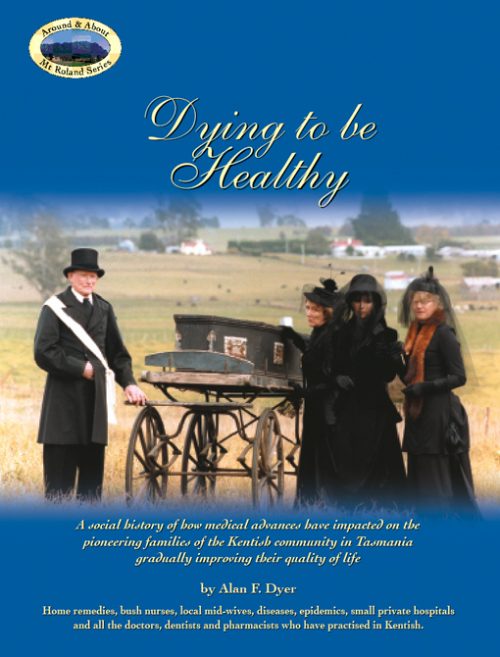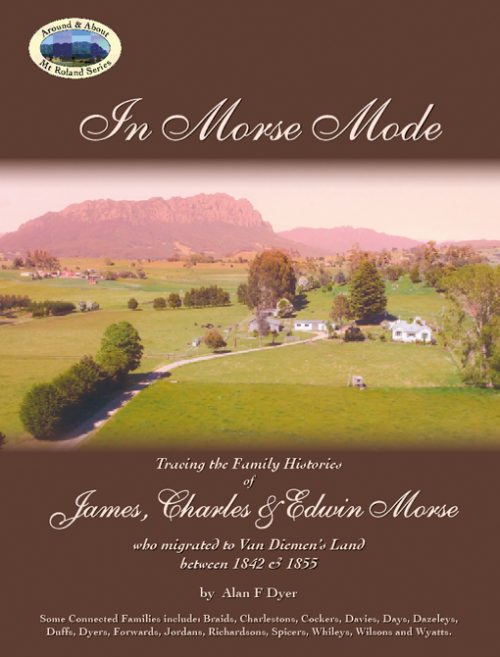
Tracing the Family History of James, Charles & Edwin Morse – Published 2016 (206 pages)
This book reconstructs the life stories of the three Morse brothers who migrated to Van Diemen‘s Land in the middle of the 19th century. Their ancestral family had lived around the village of Puriton, Somerset, England for more than 500 years. The opening chapter relates how the father and uncles of the three brothers spent a month in a Somerset jail because of the harsh injustices of the legal system and their poverty pushed circumstances. The second chapter traces their long hazardous boat voyages to Van Diemen’s Land, including dodging icebergs as they sailed across the Great Southern Ocean.James Morse arrived first and was employed by the original owner of Calstock, near Deloraine. Learning from his employer, James soon purchased some of the first land sold in this important country town. His remarkable success and his desire to help his two brothers come and join him is impressive. Once Charles and Edwin Morse arrived, they too commenced farming, purchased property, married and multiplied. Their obsession with racehorses, breweries, hotels and publican’s daughters made the later changes in some Morse families an unlikely prediction. When the rich Kentish district opened up, Edwin Morse and other related families moved there to become pioneer settlers of West Kentish and Paradise beneath Mt Roland. All three brothers lived remarkably long lives, which very few of their descendants achieved. This book also covers the first few generations of the three Morse brothers’offspring. Connected families include Braids, Charlestons, Cockers, Davies, Days, Dazeleys, Duffs, Dyers, Forwards, Jordans, Richardsons, Spicers, Whileys, Wilsons and Wyatts.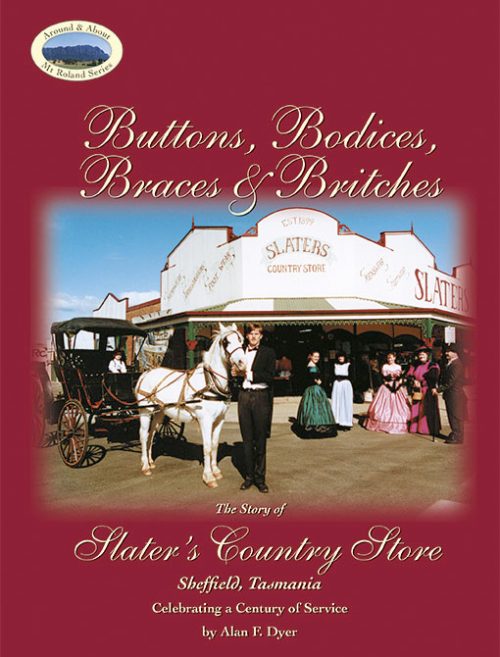
The Story of Slaters Country Store, Sheffield - Published 2000 (98 pages)
This book traces the story of one of Tasmania’s great country stores throughout its one hundred year history. Located in the centre of Sheffield, the famous Town of Murals on the Northwest Coast. Slater’s Country Store has opened its doors for business all through the constantly changing decades of the 20th Century. The book is much more than the story of a family store and its many staff. It is a social history of how a small country town coped with war and depression, progress and change.Being deprived of much of its tradional agricultural revenue base, the book concludes with an enterprising community creative enough to find a new source of revenue – tourism which today has the Mural Town of Sheffield throbbing with new life.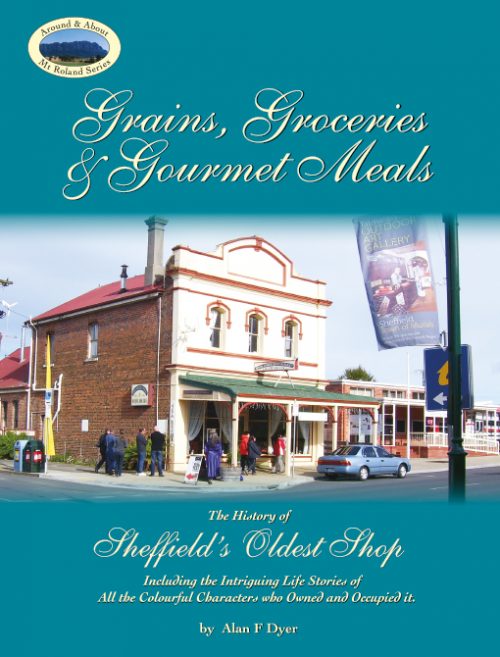
History of Sheffield‘s Oldest Shop Published 2011 (124 pages)
This book tells the fascinating life stories of all the owners and occupiers of Sheffield’s oldest shop. It is a captivating collection of its many entrepreneurs, who arrived in Sheffield from all parts of the world: England, Scotland, Ireland, America, Denmark, Germany, Netherlands, New Zealand even New Guinea. Some were wealthy millionaires, others started with nothing. Set against the unfolding history of Kentish, this book begins with the first pioneer leader Robert Maley and his incredible mother and sister. Next comes American born Major Thomas J Clerke and his younger brother Lieut-Colonel Martyn Clerke, both of whom made an enormous contribution to Kentish. It relates how Lord Peter and Lady Beverley Murray along with ex-Premier of Queensland Sir Joh and Lady Flo Bjelke-Petersen with her Pumpkin Scone Shoppe received national publicity like no other restaurant in the whole of Australia. Most of the local staff, who have worked in Sheffield’s oldest shop over the years, are also mentioned. As are the personal stories of the some of the towns’s iconic tourist personalities: Martin Klussendorf with his horse and wagon, Mathew Simms with his badpipes, and Ludo Mineur with his alpacas.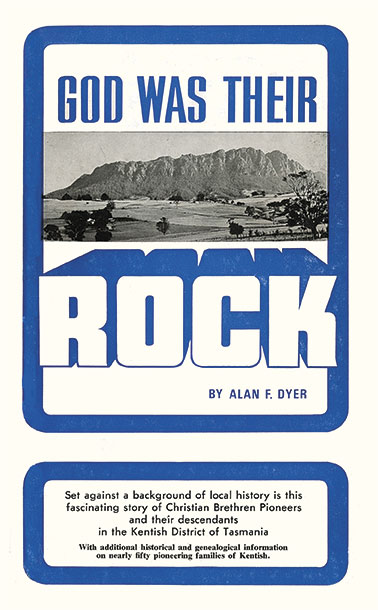
First published in 1974, two printings – (200 pages)
Set against a background of local history is this fasinating story of Christian Brethren pioneers and their descendents in the Kentish district of Northern Tasmania. First published to commemorate the centenary celebrations of their coming to Kentish, this much sought-after-book lists additional historical and genealogical information on nearly fifty pioneering families of Kentish.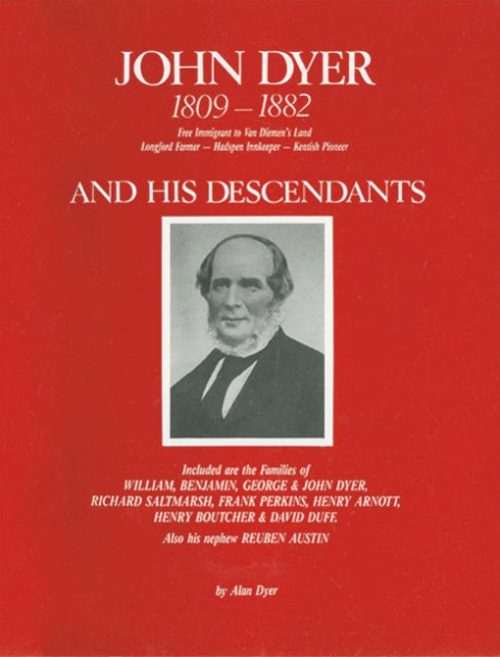
Early Pioneers of Kentish – Published 1990 (88 pages)
A free immigrant to Van Diemen’s Land in 1835, Alan‘s great grandfather was a Hadspen innkeeper before becoming one of the earliest pioneers on the Kentish Plains. There were four surviving sons: William, Benjamin, George and John, and five daughters who married Richard Saltmarsh of Cressy, Frank Perkins, Henry Arnott, Henry Boutcher and David Duff all of Kentish. The books contains the story of one notable Dyer descendant – Victoria’s famous footballer, Richmond captain and coach Jack Dyer.
Free Settlers to Northern and North Western Tasmania – Published 1980 (60 pages)
This booklet gives with the English & European Ancestry of Thomas Clarkes and Mahala Beaumont who met and married in Launceston in 1862. Towards the end of the 19th Century, they commenced a country store in Sheffield that ultimately became one of Tasmania's great country stores Slaters of Sheffield. The Clarkes' five daughters married Richard Brain (Launceston), Ernest West (Cluan), Len Manning and Jesse Slater (both Sheffield) and Edward Joyce (Burnie). The families of these five couples are outlined in this book along with other Clarke and Beaumont relatives in Tasmania.
